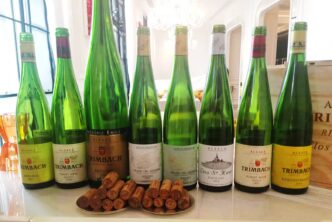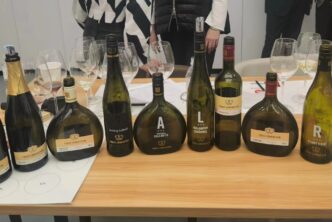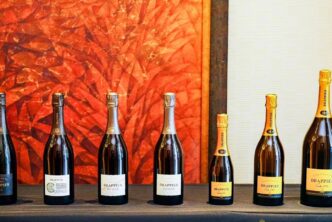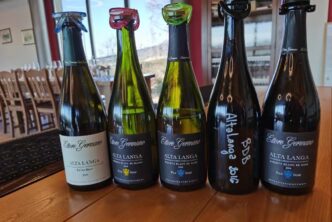When we think of whisky, we intuitively think of Scotland and Ireland, both of which claim to be the origin of whisky, and it is indisputable that they have thousands of years of history of whisky making behind them. American whisky too has a history going back hundreds of years, and even the relatively newly emerging Japanese whisky has a history of nearly 100 years. So whisky is not just a Scottish or Irish game anymore. For example, Taiwan is also the source of excellent whisky.
Most people have probably never thought of Taiwan as a place that can produce whisky, and yet in just a few years the little island’s two distilleries have won a series of awards and in a short time have become stars of the global spirits market (just think that already the 2010 edition of the Malt Whisky Yearbook included Taiwan in the world’s whisky production regions).
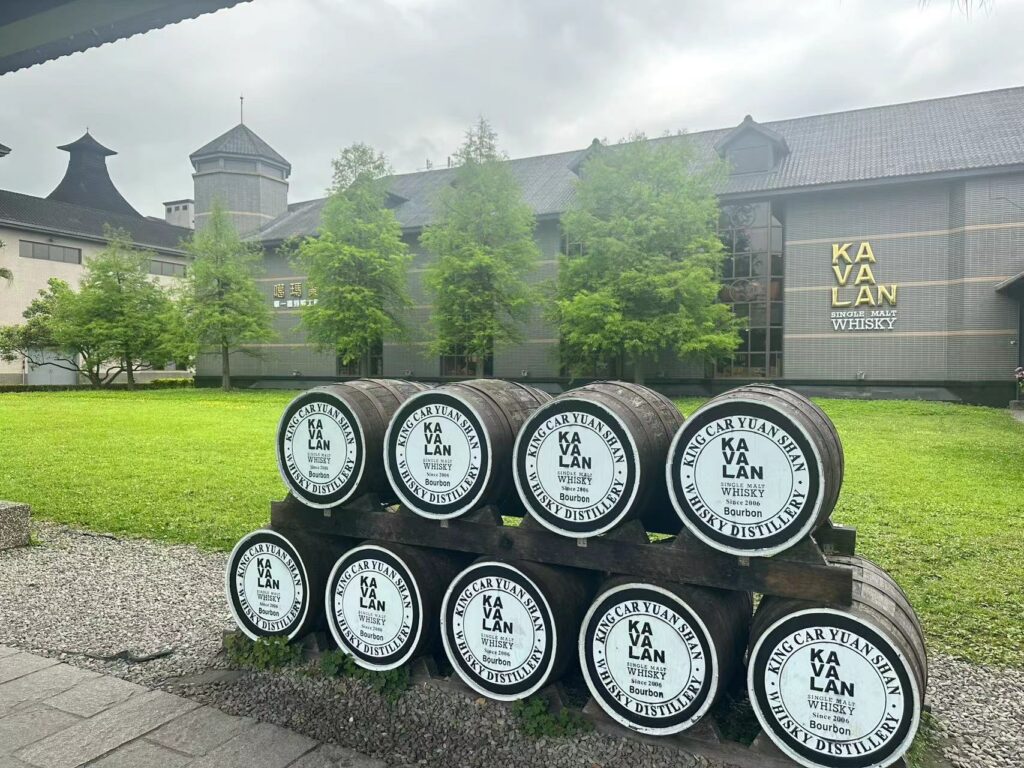
Taiwan’s first and most famous whisky distillery is Kavalan. But in order to reach its current level of fame, it had to overcame the many challenges posed by the island’s tropical weather. In so doing, it adopted a new way of making whisky that was and is outside of the traditional way of making whisky, creating a new, unique path in the field of whisky-making! Kavalan was founded only in 2005: it’s first whisky, Kavalan Classic, was officially launched in 2008, the same year the distillery was opened to the public for tours. The distillery is a very popular tourists site: in fact, prior to the Covid pandemic, the number of visitors to the distillery hovered at around 800,000 visitors a year. It has been reported that Kavalan is now the most visited whisky distillery in the world each year.
Historical Origins of Taiwanese Whisky
Ever since the Japanese rule era (beginning around the turn of the twentieth century), Taiwan’s tobacco and alcohol have been under the control of the government, with a special Bureau of Alcohol and Tobacco and a system of monopoly in place. At that time, there was no importation of alcohol and tobacco allowed, and therefore whisky could not be imported into the Taiwanese market. However, in 1955, the Bureau of Alcohol and Tobacco began to import whisky in small quantities. In 1974, the local whisky program began, and in 1984, Taiwan’s first semi-homemade whisky was produced: Yuzun Whisky was the first blended whisky made in Taiwan. Then, in 1991, the whisky importation program was opened up and in just a few years, the whisky import volume exceeded one million cases. In 2002, the tobacco and alcohol monopoly system was abolished, and the private sector was opened up to distilleries. This led to the establishment of a first local whisky distillery by the Kinche Group (a beverage company with a history of more than forty years in Taiwan, and originally best known for its Mr. Brown Coffee canned drink).
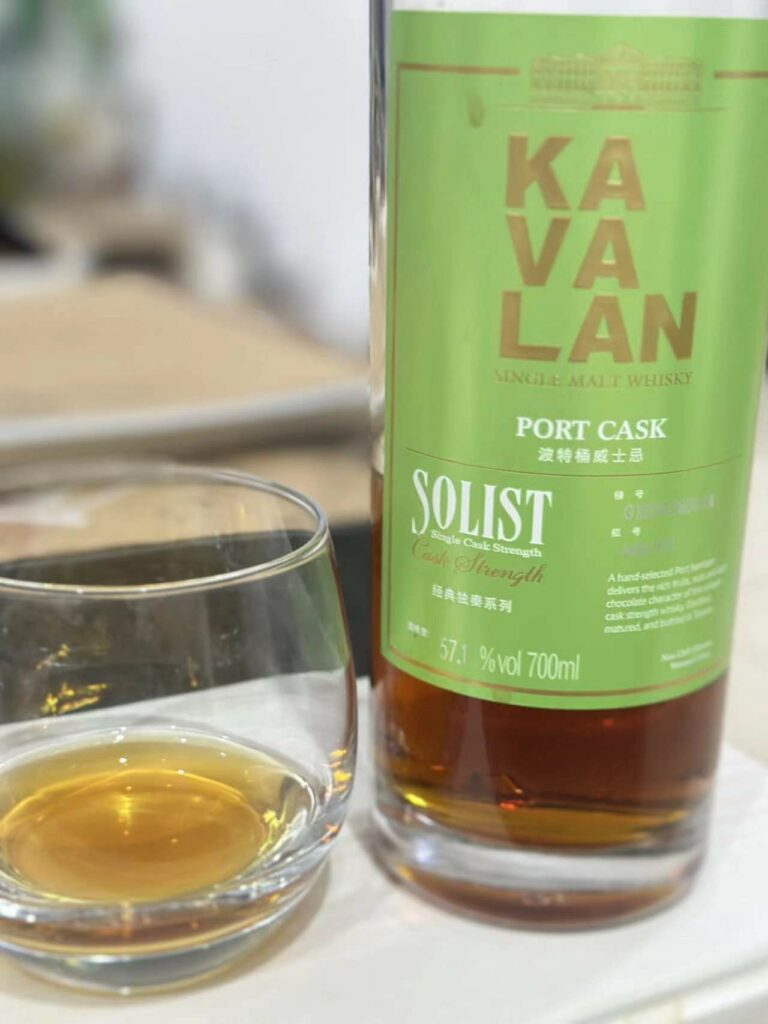
Though it may come as a surprise to readers, Taiwan is actually the third largest consumer of single malt scotch, and where whisky is far more popular than other ‘party’ spirits such as gin and vodka. Whisky bars are a common sight in Taiwan (especially in Taipei, the capital). It is a knowledgeable and sophisticated market for whisky; in fact, Taiwan is the only place in the world where single malts outsell blended whiskies.
Learning about Kavalan (King Car) distillery
The name Kavalan holds two meanings: first, “Kavalan” is the old name of Yilan city (where the distillery is located) and second, it recalls the Kavalan tribe, an aboriginal tribe that lived in Yilan County centuries ago. Choosing such a name shows respect for the local history and homeland, undoubtedly a nice touch. In fact, the English language name of the company is King Car Distillery, and Kavalan is actually the name of the whisky brand it makes: however, as it often happens, the product becomes so important and well-known that the outfit making it also becomes known by the same name (shades of Sassicaia and Tenuta San Guido: even though the latter is the estate making the Sassicaia wine, everybody refers to the winery as the “Sassicaia” winery).
The distillery building was completed in 2005, and so it began its journey into the world of distilling. Once set to go, on December 4, 2008, the King Car Distillery opened for business in Yilan’s Dingshan Township. The distillery is located in the northeastern corner of Taiwan, on the Lanyang Plain, where there are low levels of pollution and abundant rainfall. In addition, the Yilan area is blessed with pure underground water from the Central Mountain Range and the Snowy Mountain Range: it is a water rich in calcium, zinc, magnesium, and other minerals that contribute to the yeast’s formation of aromas during fermentation. Because of the underground water source, the water’s temperature is stable at 13-15 degrees Celsius. Because Taiwan has a humid and hot subtropical climate, the distillery has designed a unique distilling method that takes this climate feature into account: basically, the distillery has to accelerate the maturing efficiency because if not too much of the final product would be lost in “angel’s share”1. The result is a whisky that is rich in tropical fruit aromas and flavours, more so than other world whiskies, and this has become a signature trait of the distillery.

In addition to this, the variety of barrels used is also one of Kavalan’s specialties. In 2006, the founder of the distillery, General Manager Li Yuding, and the late Chief Consultant Dr. Jim Swan, imported a batch of Fino casks (casks used to age Sherry) for testing purposes. They compared their results to those of aging whisky in the same Fino casks but in colder regions: they found that the sub-tropical climate of Taiwan showed that greater presence of tropical fruit in the whisky. The first bottling of this whisky (only 500 bottles made!), was released in January 2010 and received full scores (100 points) from the International Review of Spirits (IRS) in 2013 and 2014. Quite the success for the fledgling distillery! The winery continues to diversify its barrels, with Sherry, Pedro Ximènes, Amontillado, Moscatel, Bourbon, Port, Brandy, and generic Vinho barrels. The newest of the winery’s experimental barrels are from Madeira, and though the whisky made in these barrels is of very limited volume, it has been a huge success. Today, the distillery’s whisky-making team is led by veteran whisky maker Zerose Yang who continues Kavalan’s historical study of the importance of barrels in the production of whisky.
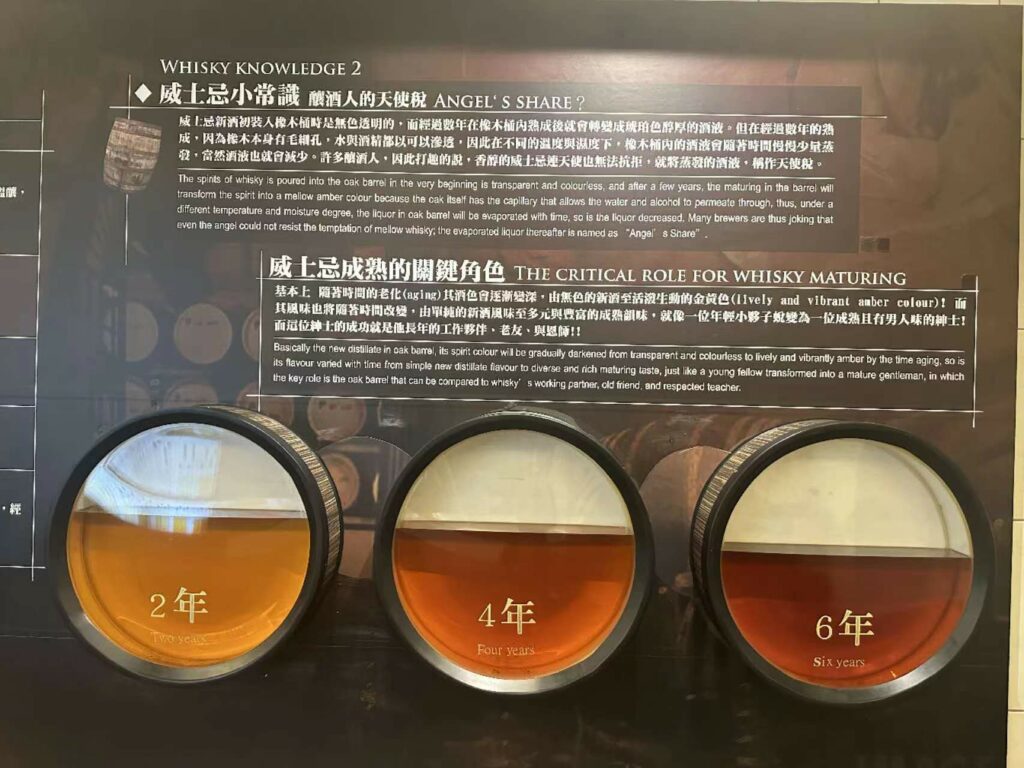
Kavalan’s special barrel-making and aging processes
In addition to buying casks, the distillery also makes its own barrels, by way of a unique cask-making process called “Shave, Toast, Re-char” (STR)2: as the casks used are purchased and old (previously used casks), they need to be processed again in depth. At the beginning, two polishing machines are used to remove the existing crystal layers embedded in the purchased barrels, and so the purchased barrels are either planed or deep planed, depending on the situation. Next, the barrels are hand-roasted, using rolling heating machines to preheat the barrels and prepare them for the charring process. The charring of the barrels follows: the barrels are charred for about thirty seconds to produce a thick layer of charcoal after intense combustion. Once completely cooled and tested for leaks, the barrels can be used.
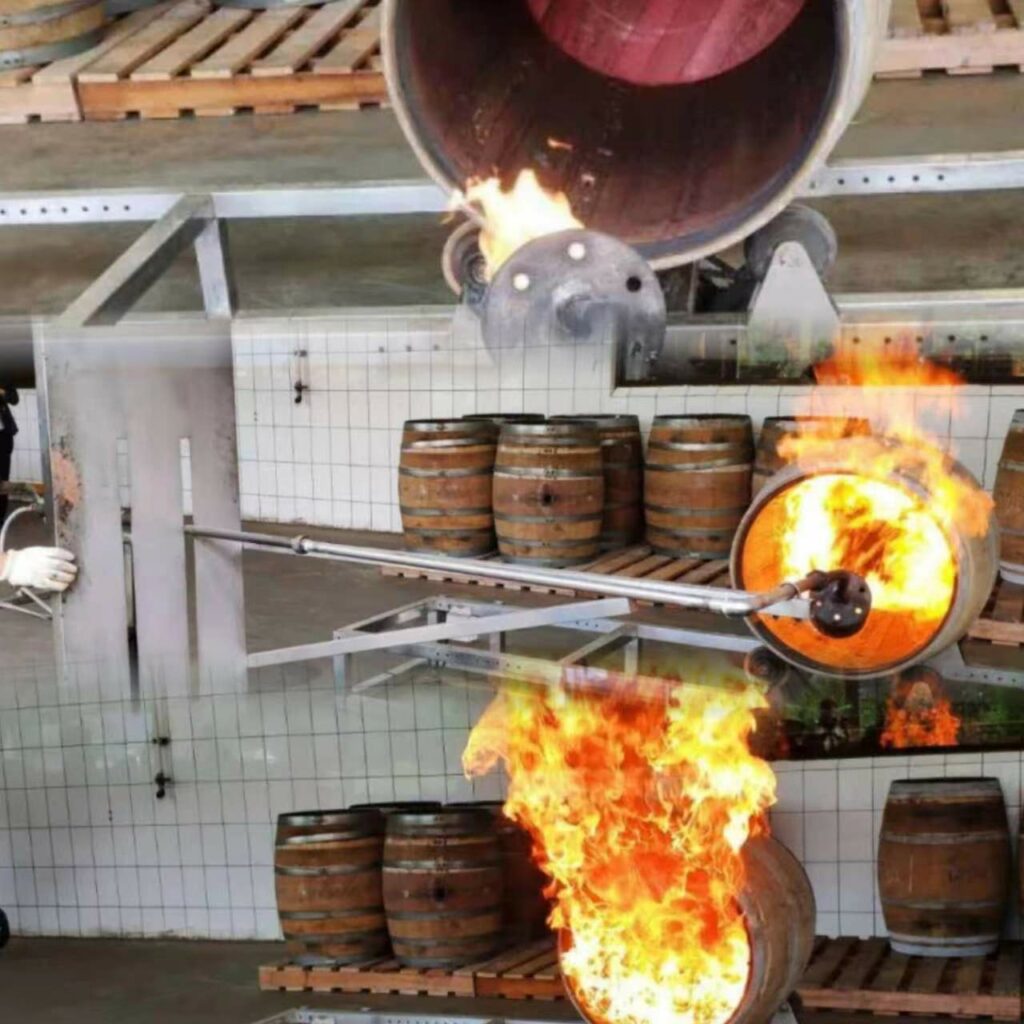
Taiwan has a very short history of producing whisky, which is obviously a disadvantage compared to other European and American countries that have a huge amount of blending data. But the distillery has come up with a new idea: specializing in single malt whisky from original casks.
Because of Taiwan’s hot and humid climate, the angel’s share can be as high as 12%-15% during the distilling process, which is a big difference from Scotland’s 2% for example. And so, Taiwan whisky usually doesn’t have the vintage year or boast long aged whiskies (such as the 12 Years Old, 18 Years Old and 24 Years Old whiskies of other countries). This is because the high environmental average temperature accelerates the maturation of the whisky in the casks, so that the whisky’s aging time can be shortened, while giving a more concentrated whisky. The flavours of the whisky are very well integrated into the spirit, resulting in a concentrated, rich, layered, deep whisky of very bold, strong aromas and flavours. In order to avoid over-heating of the casks in the island’s tropical climate, the distillery has devised a unique storage method, where the largest Sherry casks are placed on the top floor of the warehouse (where the highest temperatures are) and smaller Port casks are stored on the bottom floor (as these casks are smaller, there is a greater the proportion of liquid in contact with the wood, and the faster maturation will take place, such that there is no need to place them on top). Currently the distillery has an annual production capacity of 10 million bottles, but production is still relatively small scale because Kavalan bottles single cask full strength whiskies in consequently limited numbers. Little or small it may be, Kavalan’s whiskies are outstanding: the company really a he successs troy that has taken the whisky world by storm. It really is the light of Taiwan.
The wines/whiskies in this report
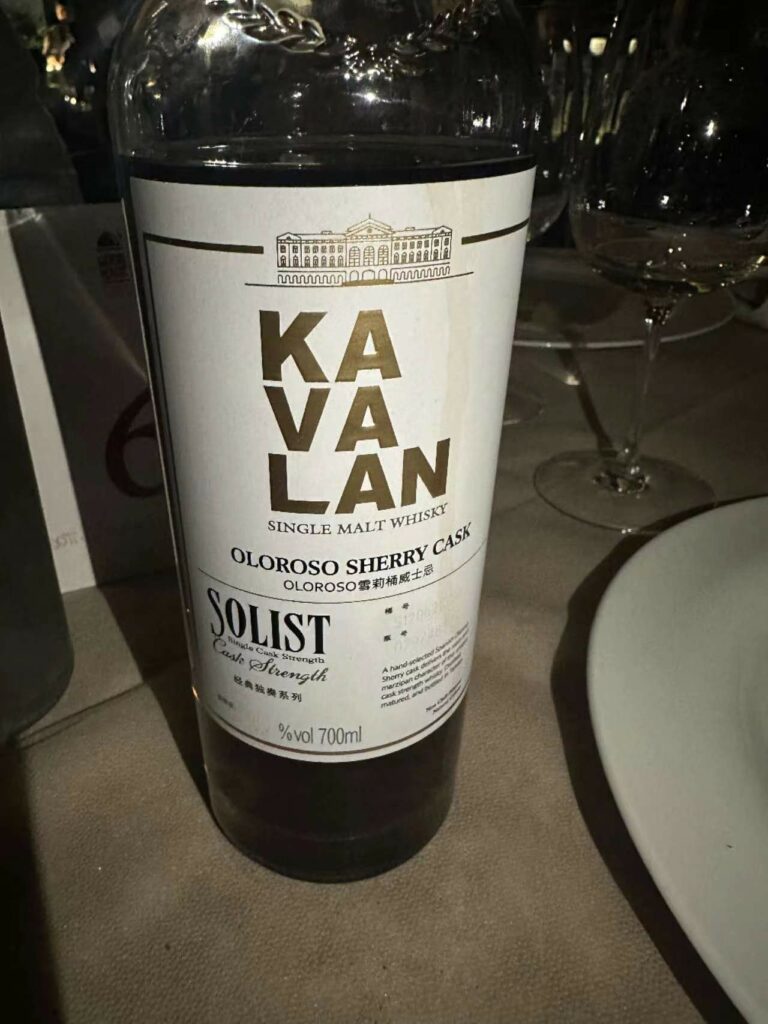
Kavalan Madeira Cask Single Cask Strength 94
Bright deep burnished amber colour. Aromas and flavours of dark plums and mango jam, dates and beeswax on entry, then raisins, caramel, toffee and berries complicated by black pepper, milk chocolate rise to the fore on the mid palate, with a rich but not cloying, lightly smoky finish that features dried plums and sweet tropical fruits. A hint of slight bitterness from the cocoa adds further complexity. This gorgeous whisky is especially remarkable for its mellowness, rich deep flavours and outstanding balance. For example, this is so well-balanced that I could not tell it was actually 59% alcohol by volume.
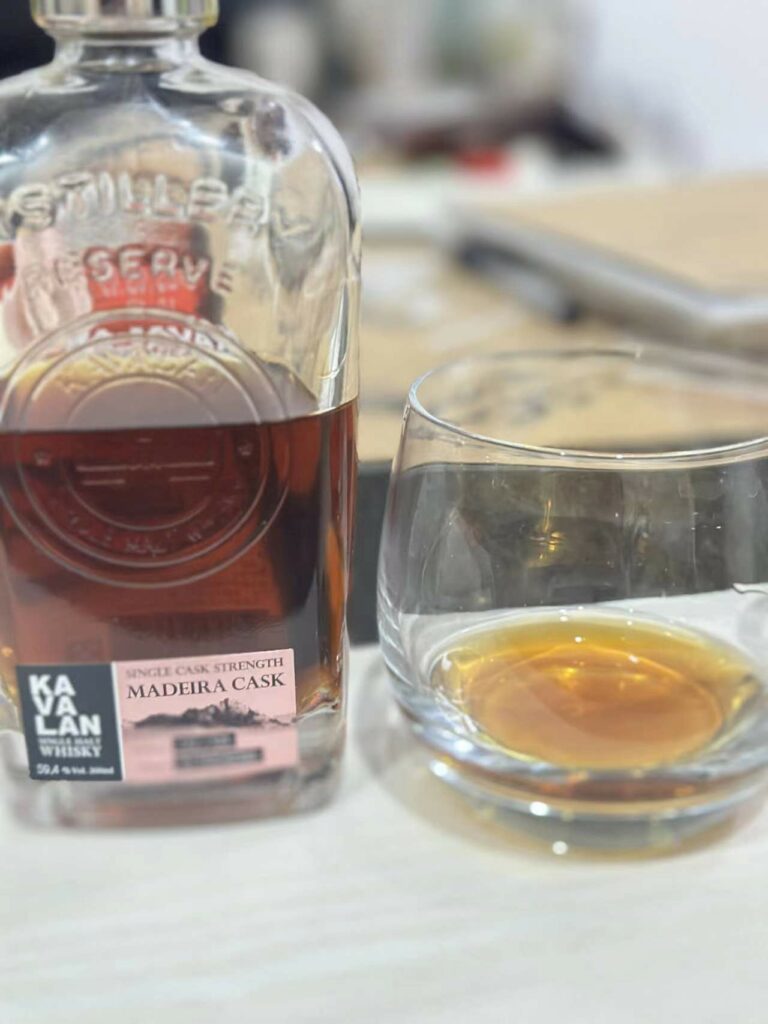
Kavalan Solist Oloroso Sherry Cask Single Cask Strength 89
Deep amber colour. Matured in aged Spanish Oloroso Sherry casks, this whisky opens with a rich, nose of dried fruits and nuts, and an intense woody aroma, but also a very strong whiff of alcohol. Full-bodied, but the high alcohol content (60.2%) does seem to my taste to be suitable for drinking this whisky neat. In fact, after adding a little ice, it becomes smokier, with some notes of pu-erh tea, dark cherries, chocolate, espresso and dried figs emerging. Finishes with distinct echoes of seawater, tobacco, and leather, and some spice. The slightly heavy-handed wood tones, leave an impression of dryness, but the coffee and sweet nut notes are inviting making this very much a Sherry bomb indeed. Though some people might like to drink this as it is, I strongly advise to mellow it with a little ice or water for maximum enjoyment.
Kavalan Solist Port Cask Single Cask Strength 92
Deep amber colour. On the nose and the palate there are intense notes of umami, coffee sugar, dried candied fruit, and star anise, along with complicating hints of orange peel, herbs, sour plum juice, vanilla and popcorn. The mid-palate is gradually dominated by chocolate and coffee, with spices and roasted wood. The woodsy tone is followed by smoke on the long finish that features a noteworthy whiff of alcohol. This is an excellent whisky suitable for those who like their whisky strong, powerful and intense.
Kavalan Solist Vinho Barrique Single Cask Strength 92
Nice bright brown-amber. After opening up with aeration, the whisky offers oak, sweet orange, nectar, and tropical fruits such as pineapple and mango. In the mouth, there is an oily texture to the sweet syrup, and pepper flavours, but with a distinctive nuance derived from the specific Vinho barrel used that makes this whisky very different from Kavalan’s other whiskies aged in different oak barrels. On the long finish there are nicely persistent flavours of coffee, dark chocolate, and charry oak, with lingering sweetness.

——————————————————————————
1Dr Jim Swan (1941-2017) : The whisky industry lost a master when he passed away at his home in Scotland in February 2017. Dr Jim Swan had the reputation of being the ‘Einstein of whisky’! After graduating from Heriot-Watt University, Jim Swan joined the Inveresk Research International Institute – the precursor to the Scotch Whisky Institute – in 1974. In 1993, Dr Jim left the Whisky Research Institute and teamed up with Harry Riffkin to acquire Glasgow-based Tatlock & Thomson, a long-established food and drink analysis company.
By 2002, Swan had started his own company, Dr James Swan Food and Drink Consultants, and by this time he was also officially an independent spirits consultant. Dr Jim Swan has helped many New World regions create their own whisky distilleries and under his guidance the only whisky distillery in Wales (Penderyn), the Cotswolds Distillery, the East London Liquor Company, and in other countries too such as India (Amrut), Taiwan (Kavalan), Israel (Milk & Honey, or M&H). In his 40 years of experience, Dr Jim Swan won numerous awards for the whiskies he consulted on, and was himself awarded the Whisky Advocate’s Pioneer of the Year Award in 2005. In recognition of his outstanding contribution to the development of whisky around the world, the Dr Jim Swan Award for Services to Scotch Whisky was created in his honour by the Scottish Whisky Awards.
2STR (Shave, Toast, Re-Char)
Before new whisky can be filled into casks, the casks have to undergo the very important STR process, which is divided into three stages: Shave, Toast and Re-Char. Jim Swan is widely credited with the invention of the “STR Cask” system. The function of the STR process involves the removal of potentially contaminated wood (after a long period of transport, barrels are susceptible to oxidization and fungus formation) and this does not affect the subsequent ageing process. Secondly, removing the top layer and re-toasting helps release the caramel cream and smoky flavours and reactivates the effect of oak by creating a carbonation layer inside that filters out the off-flavours.
3Angle’s Share
When whisky is stored in oak casks, as the casks are made of oak which is a porous material, the liquid in the casks will slowly evaporate into the air due to respiration, resulting in the whisky disappearing proportionally year after year (this generally occurs at a rate of 2% per annum in Scotland). This evaporated liquid is known as ‘Angel’s Share’. The actual amount of the angel’s share is related to the material and structure of the cask, the ratio of alcohol to water, and environmental factors such as temperature, humidity, ageing location and seasonal changes. Clearly, climate is one of the main variables in determining the flavour of whisky, but it is also one of the factors that affects the rate of evaporation. Warmer and wetter areas will make whisky evaporate faster. So while Scotland’s year round low temperatures mean an average evaporation rate of about 2% per year, in Kentucky in the United States, a State that has a huge difference in temperature between winter and summer (from minus 20 degrees Celsius to 40 or 50 degrees Celsius), a year of maturing there is about equivalent to three years in Scotland’s effect and the angel share there is more than 4%. Tropical countries like Taiwan and India have much higher evaporates rates (8-10 per cent per year and as high as 16 per cent, respectively). after a long period of transport,

 中文
中文
